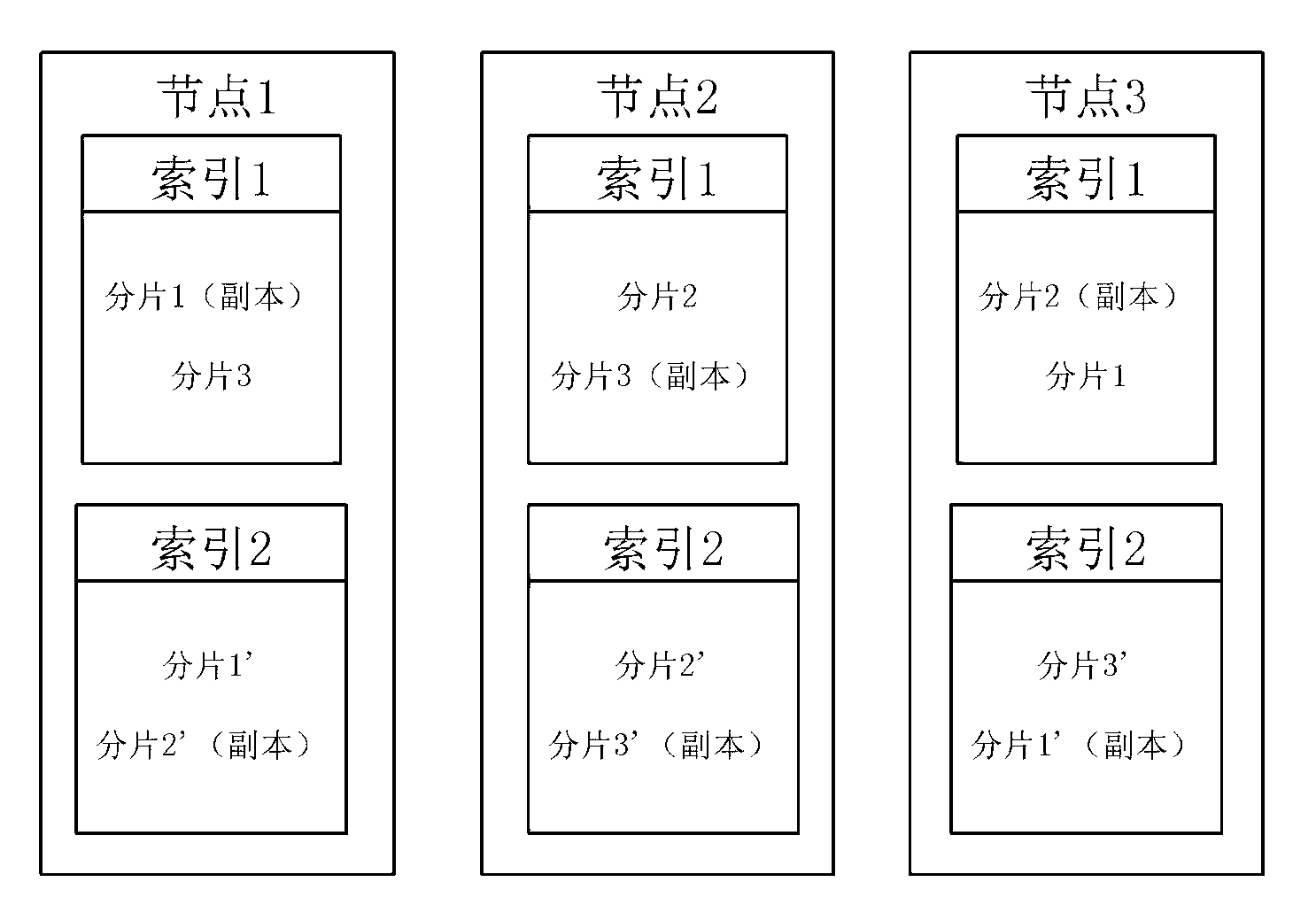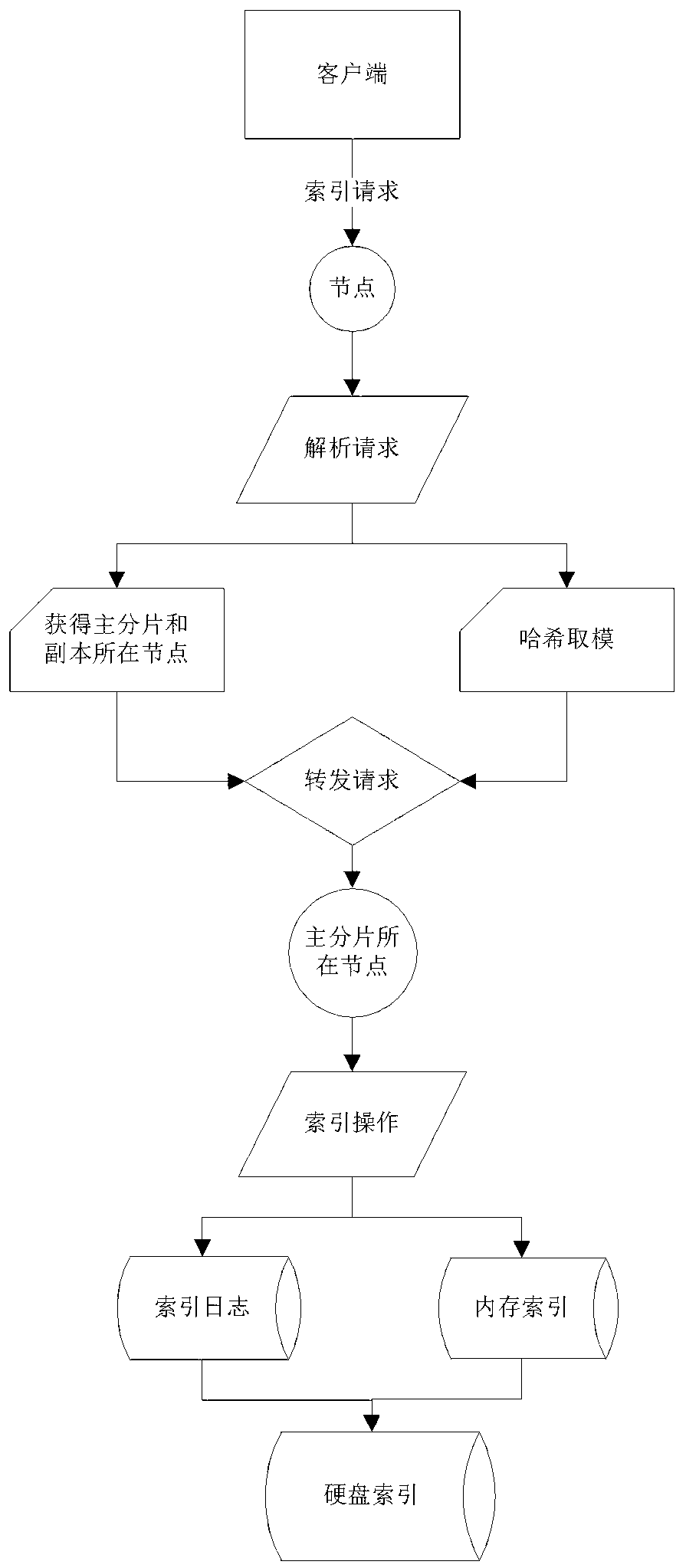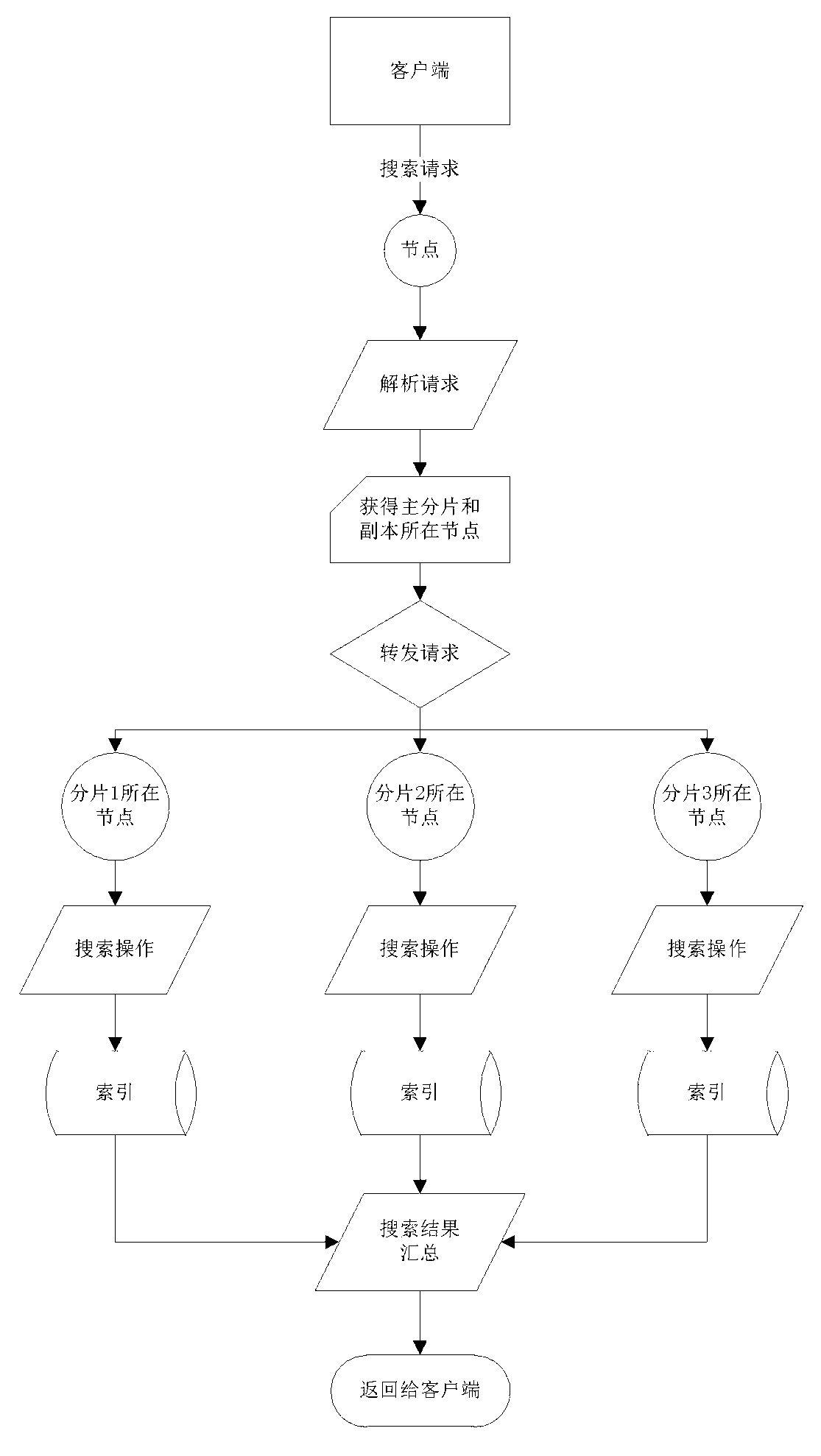Distributed real-time search engine based on p2p
A distributed real-time, search engine technology, applied in the field of distributed real-time search engines, can solve the problems that the client cannot obtain the latest data immediately, the real-time data cannot be guaranteed, and the running speed is reduced, so as to shorten the search path and speed up the search rate , The effect of improving the speed of retrieval
- Summary
- Abstract
- Description
- Claims
- Application Information
AI Technical Summary
Problems solved by technology
Method used
Image
Examples
Embodiment Construction
[0021] Below in conjunction with accompanying drawing, the present invention will be further described:
[0022] Such as figure 1 , a p2p-based distributed real-time search engine, its cluster contains several nodes, each node contains more than one index, and each index is divided into more than one index fragments, the index fragments only contain the main shards or both a primary shard and more than one replica; as in figure 1 A cluster containing three nodes is shown, which contains node 1, node 2, and node 3, and node 1, node 2, and node 3 all contain two indexes, index 1 and index 2, where index 1 is divided into three Fragmentation: Fragment 1, Fragment 2, Fragment 3. At the same time, the number of copies of each fragment of Index 1 is 1, and Index 2 is divided into three fragments: Fragment 1', Fragment 2', Shard 3', and the number of copies of each shard of index 2 is 1; index 1 in node 1 contains shard 1 (copy), shard 3, and index 1 in node 2 contains shard 2, sha...
PUM
 Login to View More
Login to View More Abstract
Description
Claims
Application Information
 Login to View More
Login to View More - R&D
- Intellectual Property
- Life Sciences
- Materials
- Tech Scout
- Unparalleled Data Quality
- Higher Quality Content
- 60% Fewer Hallucinations
Browse by: Latest US Patents, China's latest patents, Technical Efficacy Thesaurus, Application Domain, Technology Topic, Popular Technical Reports.
© 2025 PatSnap. All rights reserved.Legal|Privacy policy|Modern Slavery Act Transparency Statement|Sitemap|About US| Contact US: help@patsnap.com



